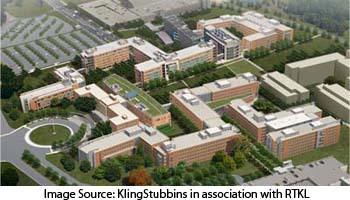|
|
User Note:
While great efforts have been taken to provide accurate and complete information on the pages of CPEP, please be aware that the information contained herewith is considered a work‐in‐progress for this thesis project. Modifications and changes related to the original building designs and construction methodologies for this senior thesis project are solely the interpretation of Adam Love. Changes and discrepancies in no way imply that the original design contained errors or was flawed. Differing assumptions, code references, requirements, and methodologies have been incorporated into this thesis project; therefore, investigation results may vary from the original design.
|
|
Thesis Final Report
The following report is a compilation of this semester's work that builds on the previous technical reports of the FDA OC/ORA Office Building Wing B.
The executive summary can be found here.
The full report can be found here.
The report only can be found here.
The appendices only can be found here. |
|
| |
|
Executive Summary
A building design is very integrated; every change to a building has some effect on other functions of the building. A change to the structure can affect cost, schedule, serviceability, MEP Coordination, and Architecture. It is the purpose of this thesis to investigate some of the affects of a change to the building, while exploring more advanced structure design topics. It is proposed to change the superstructure of the FDA OC/ORA Office Building Wing B from concrete to steel.
Using the existing grid and column lay out with a few minor changes, the steel framing was determined, and the gravity system was designed. Braced frames around the core were designed to take the primary lateral load and to limit the deflection of the wing. Exterior moment frames were designed to aid in the resistance of progressive collapse and reduce the eccentric effects of the wing.
To show the constructability of the new structure typical connections were designed for both the gravity and lateral system. A typical beam to girder connection and a girder to column connection were designed for the gravity system. Typical lateral frame connections were designed as a flange bolted moment connection, and a heavy braced connection.
As the threat for unforeseeable events increase, the design of structures to resist progressive collapse is becoming more important. The original structure was designed to resist progressive collapse, and part of this thesis was devoted to the research of the design of structures to resist progressive collapse. Two methods exist for the design to resist collapse, and both methods are presented in this thesis. To further understand the design progressive collapse a method will be chosen, and the design of removal of a column will be implemented.
Impacts on the cost and schedule were studied and compared to the original design and the new structure design. Both cost and schedules were created using RS Means Building Construction Data 2007.
The mechanical system was studied in respects to the ceiling to floor space where the mechanical ductwork passed through, the new structure design limited the space for the mechanical ducts and at a critical location, and two of the ducts will be resized. The ducts were resized using the existing airflow through the system, and were sized to fit in the new adjusted space. |
|
| |
|
MAE Integrated Work
It was the purpose of this thesis to integrate the course work learned in the graduate course into the thesis. There are multiple courses that were used to aid in the integration of the graduate course work, and one topic which was not learned in any course was implemented into the thesis. Advance Computer Modeling: AE 597A, Steel Connection Design: AE 534 and Progressive Collapse Design. |
|
|
